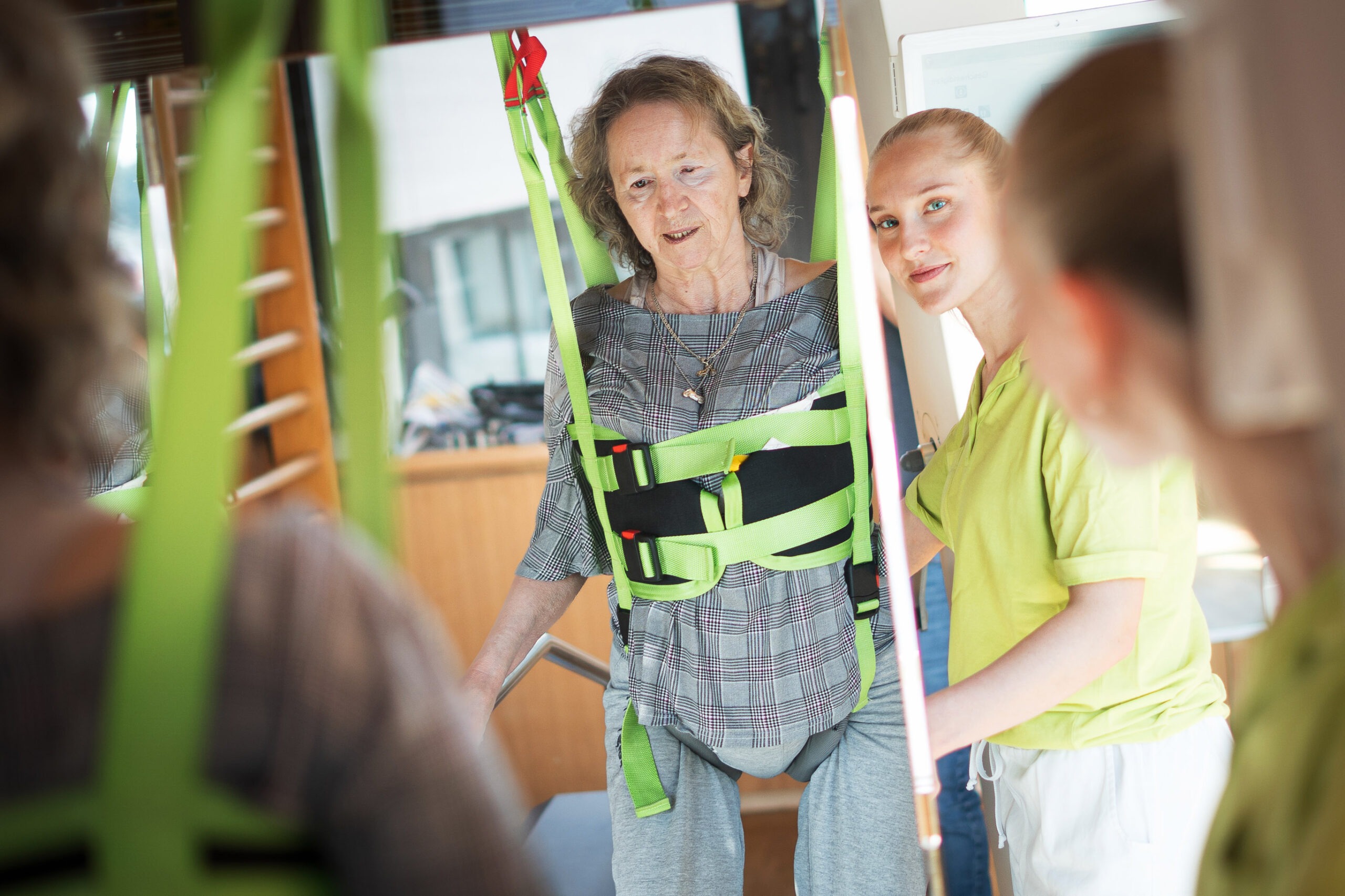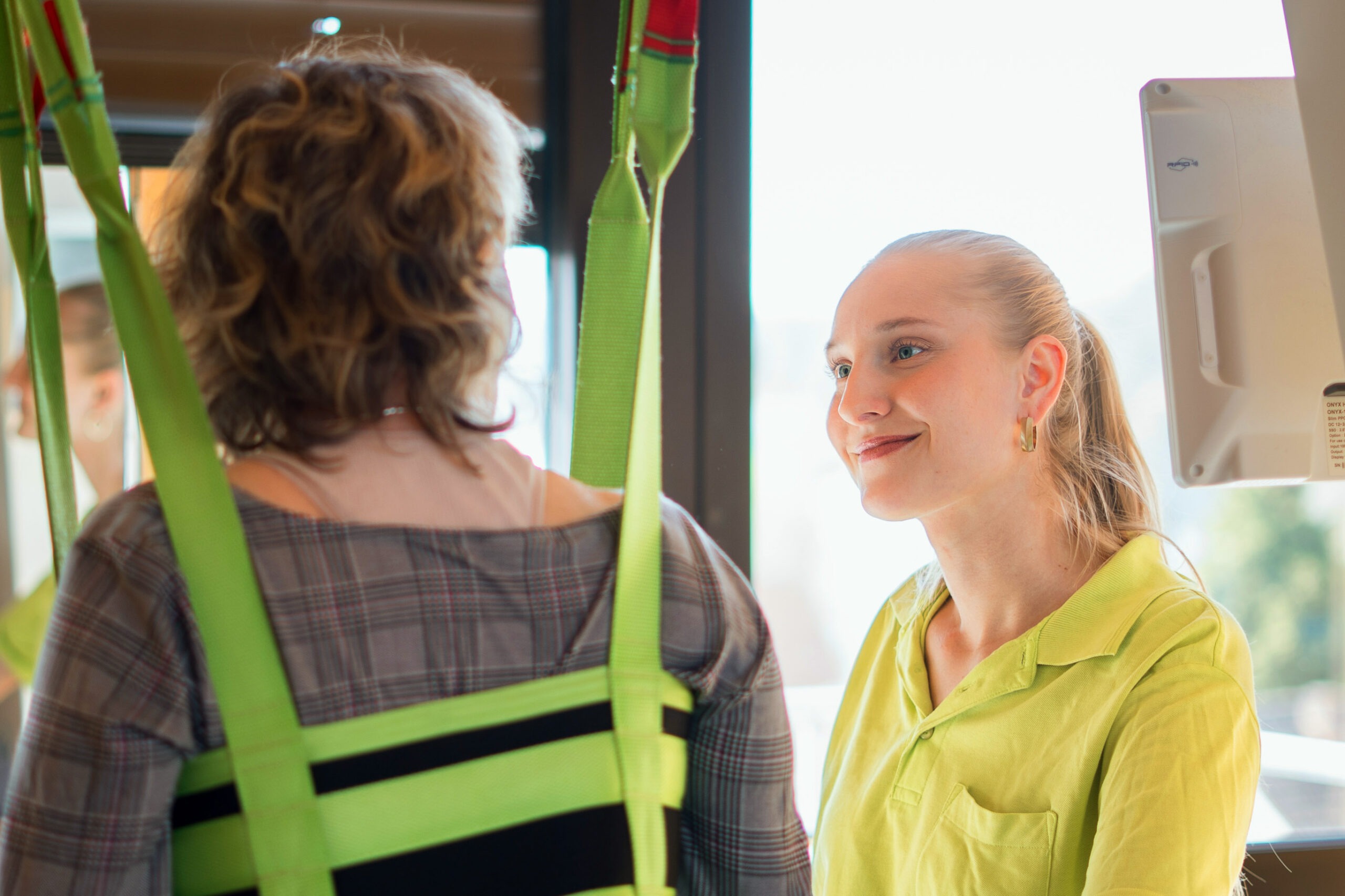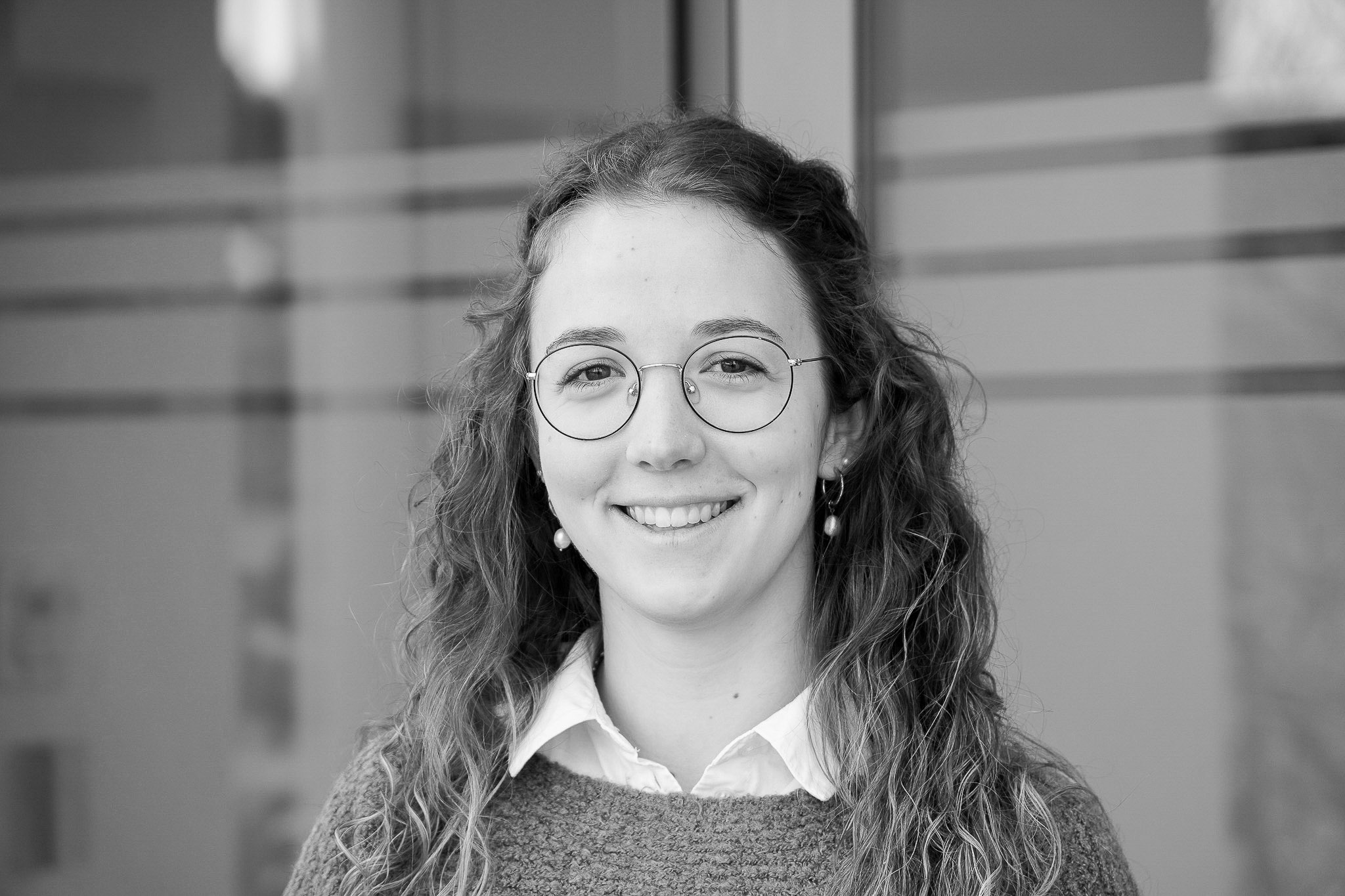
Therapy & Practice
Waldburg-Zeil Clinic invests in more efficient gait training
Integration of the THERA-Trainer lyra into existing therapy concepts – economic and therapeutic advantages

Miriam Keifert
Product Manager Clinical & Scientific, THERA-Trainer
The Waldburg-Zeil Clinic in Bad Wurzach, under the neurological direction of Dr Martin Schorl, has embraced robot-assisted gait therapy and acquired a THERA-Trainer lyra for its facility last year. Since then, the gait trainer has been helping patients recover their walking ability and other bodily functions following strokes or damage to the nervous system. The lyra is now firmly established in the daily therapy routine at the rehabilitation clinic. But what considerations and decisions led to the purchase of this therapeutic device and how can it be seamlessly integrated into the clinic’s therapy concept. In an interview conducted by THERA-Trainer, senior physician Dr Martin Schorl and project manager and deputy therapy director Johannes Schuschkewitz share valuable insights about the economic and therapeutic benefits of using the end effector.
Dr Martin Schorl has extensive experience in gait rehabilitation and has already successfully introduced the lyra to a second clinic in partnership with the Waldburg-Zeil Clinic in Bad Wurzach.
During his extensive research work, he compared various therapy devices for gait rehabilitation. The lyra proved to be particularly suitable for the patients at the rehabilitation clinic in Bad Wurzach. In the specialist clinic, patients are treated in phases C and D. The lyra is particularly suitable for these individuals, as they are optimally supported and encouraged by the gait trainer in regaining a functional gait pattern and improving their mobility. Dr Schorl specifically highlights patients with hemiplegia, for whom the lyra is “the device of choice”. A treadmill with suspension is not a suitable alternative for patients with an FAC of 0 to 2, as it does not provide the necessary therapeutic effectiveness. For these patients, weight relief is an essential therapeutic aspect that the lyra delivers effectively while offering exceptional cost-efficiency.
Beyond its functional benefits for patients, the lyra also stands out through its user-friendly operation. Short setup times are essential in a stressful therapy environment, and this is precisely where the lyra excels. According to Schuschkewitz, it offers fast and hassle-free setup, which saves precious time during therapy sessions and ensures patients can spend their time walking as effectively as possible. Therapists spend considerably less time mastering the functions and application of this gait trainer compared to other robotic gait trainers – a benefit that delivers real value in today’s busy clinical settings.
Particularly for large and heavy robotic gait trainers, finding appropriate rooms presents a common challenge – requiring not only ample space but also structures that meet essential load-bearing requirements. Against this backdrop, a key advantage of the lyra was its effortless integration into an existing therapy room at the Bad Wurzach rehabilitation clinic. Project manager Johannes Schuschkewitz pointed out that other robotic gait trainers would necessitate either a new building or modifications to existing ones. Choosing the lyra therefore saves both costs and valuable time when integrating it into hospital workflows.
Dr Martin Schorl has extensive experience in gait rehabilitation and has already successfully introduced the lyra to a second clinic in partnership with the Waldburg-Zeil Clinic in Bad Wurzach.
During his extensive research work, he compared various therapy devices for gait rehabilitation. The lyra proved to be particularly suitable for the patients at the rehabilitation clinic in Bad Wurzach. In the specialist clinic, patients are treated in phases C and D. The lyra is particularly suitable for these individuals, as they are optimally supported and encouraged by the gait trainer in regaining a functional gait pattern and improving their mobility. Dr Schorl specifically highlights patients with hemiplegia, for whom the lyra is “the device of choice”. A treadmill with suspension is not a suitable alternative for patients with an FAC of 0 to 2, as it does not provide the necessary therapeutic effectiveness. For these patients, weight relief is an essential therapeutic aspect that the lyra delivers effectively while offering exceptional cost-efficiency.
Beyond its functional benefits for patients, the lyra also stands out through its user-friendly operation. Short setup times are essential in a stressful therapy environment, and this is precisely where the lyra excels. According to Schuschkewitz, it offers fast and hassle-free setup, which saves precious time during therapy sessions and ensures patients can spend their time walking as effectively as possible. Therapists spend considerably less time mastering the functions and application of this gait trainer compared to other robotic gait trainers – a benefit that delivers real value in today’s busy clinical settings.
Particularly for large and heavy robotic gait trainers, finding appropriate rooms presents a common challenge – requiring not only ample space but also structures that meet essential load-bearing requirements. Against this backdrop, a key advantage of the lyra was its effortless integration into an existing therapy room at the Bad Wurzach rehabilitation clinic. Project manager Johannes Schuschkewitz pointed out that other robotic gait trainers would necessitate either a new building or modifications to existing ones. Choosing the lyra therefore saves both costs and valuable time when integrating it into hospital workflows.

The lyra has become extremely popular among both therapists and patients, establishing itself as an essential element in everyday therapy.
The introduction of the lyra at Waldburg-Zeil Clinic coincided with the launch of a new therapy programme. In addition to one-on-one therapy, a movement circuit is now offered. This consists of three devices: lyra gait trainer, cycling trainer and balance trainer (THERA-Trainer balo). Up to three patients can exercise simultaneously in the dedicated therapy room while receiving support from a therapist and trainee. Patients train on the lyra two to three times per week for 20 to 30 minutes. The movement circuit ensures maximum usage of the lyra. The end effector is used for at least four to five hours per day at the clinic in Bad Wurzach. Schuschkewitz emphasises that therapists gain numerous benefits when working with the training device. The therapists are scheduled for set periods in the movement circuit, allowing them to work with the lyra for longer periods at a time. This allows them to develop routines, which is crucial for the successful implementation of the gait trainer.
Since the rehabilitation clinic in Bad Wurzach acquired the lyra, the effectiveness of gait training has been further increased. Previously, FAC 0–2 patients were supported by two therapists in the corridor, while a third therapist would crawl along the floor to correctly place the patient’s feet. According to Schuschkewitz, the 15 to 20 steps that were taken after 20 minutes are hardly comparable to the number of steps achieved during lyra training. Dr Schorl also doubts the learning effect of “shuffling patients 15 steps along a corridor”. He also emphasises that training on the lyra is less distracting, allowing patients to focus more effectively on their gait training. Additionally, gait training with the lyra significantly reduces physical strain on therapists. Physically strong therapists who can provide corridor support for patients for extended periods aren’t always available. Furthermore, therapists who are no longer needed for gait training are now available to other patients. According to Schuschkewitz, one-on-one therapy can now be offered to a larger group of patients, which was previously impossible due to capacity constraints.
Different objectives are pursued with gait training on the lyra, depending on the patient. Besides the main goal of relearning to walk, secondary aspects such as balance and trunk stability can also be addressed for a better free sitting position or improved head posture control in patients with swallowing disorders. Lyra training is beneficial for patients who spend their day in a wheelchair, helping them to change their posture, while patients with Parkinson’s benefit from its rhythmic movements.
During observation of a training session, a patient’s enthusiasm and motivation during gait training on the lyra was clearly apparent, as she excitedly commented: “Walking in the lyra is a joy – it’s such a wonderful feeling beyond description. It makes me happy.” The patient was unable to walk or stand at the beginning of rehabilitation and had not walked for three years.
The introduction of the lyra at Waldburg-Zeil has proven to be a success story from various viewpoints. It streamlines and improves day-to-day therapeutic care and is the perfect addition to the current therapy concept. The lyra has become extremely popular among both therapists and patients, establishing itself as an essential element in everyday therapy.
Since the rehabilitation clinic in Bad Wurzach acquired the lyra, the effectiveness of gait training has been further increased. Previously, FAC 0–2 patients were supported by two therapists in the corridor, while a third therapist would crawl along the floor to correctly place the patient’s feet. According to Schuschkewitz, the 15 to 20 steps that were taken after 20 minutes are hardly comparable to the number of steps achieved during lyra training. Dr Schorl also doubts the learning effect of “shuffling patients 15 steps along a corridor”. He also emphasises that training on the lyra is less distracting, allowing patients to focus more effectively on their gait training. Additionally, gait training with the lyra significantly reduces physical strain on therapists. Physically strong therapists who can provide corridor support for patients for extended periods aren’t always available. Furthermore, therapists who are no longer needed for gait training are now available to other patients. According to Schuschkewitz, one-on-one therapy can now be offered to a larger group of patients, which was previously impossible due to capacity constraints.
Different objectives are pursued with gait training on the lyra, depending on the patient. Besides the main goal of relearning to walk, secondary aspects such as balance and trunk stability can also be addressed for a better free sitting position or improved head posture control in patients with swallowing disorders. Lyra training is beneficial for patients who spend their day in a wheelchair, helping them to change their posture, while patients with Parkinson’s benefit from its rhythmic movements.
During observation of a training session, a patient’s enthusiasm and motivation during gait training on the lyra was clearly apparent, as she excitedly commented: “Walking in the lyra is a joy – it’s such a wonderful feeling beyond description. It makes me happy.” The patient was unable to walk or stand at the beginning of rehabilitation and had not walked for three years.
The introduction of the lyra at Waldburg-Zeil has proven to be a success story from various viewpoints. It streamlines and improves day-to-day therapeutic care and is the perfect addition to the current therapy concept. The lyra has become extremely popular among both therapists and patients, establishing itself as an essential element in everyday therapy.
“Walking in the lyra is a joy – it’s such a wonderful feeling beyond description. It makes me happy.”

Ambulante Rehabilitation
Fachkreise
Gait
lyra
Produkte
Stationäre Rehabilitation
THERAPY
Therapy & Practice
THERAPY 2025-II
THERAPY Magazine

Miriam Keifert
Product Manager Clinical & Scientific, THERA-Trainer
Miriam Keifert has a degree in sports science
(M.Sc.) and
works in product management
of THERA-Trainer with the
specialising in "Clinical & Scientific".

Lorena Aumann
Project management assistant, THERA-Trainer
Lorena Aumann completed her studies in medical technology and now works in project management at THERA-Trainer
References:
- Mehrholz J, Thomas S, Kugler J et al. Elektromechanisch unterstütztes Gehtraining nach Schlaganfall. Cochrane Database of Systematic Reviews. Version published: 22 October 2020; https://doi.org/10.1002/14651858.CD006185.pub5
- Lenzen-Schulte M.Ischämischer Schlaganfall: Grenzen der interventionellen Thrombektomie beim Hirninfarkt. Dtsch Arztebl 2016; 113: A-1806 / B-1522 / C-1512
- Eckstein HH, Kühnl A, Berkefeld J et al. Diagnostik, Therapie und Nachsorge der extrakraniellen Karotisstenose. Dtsch Arztebl Int 2020; 117: 801-7
You need to load content from reCAPTCHA to submit the form. Please note that doing so will share data with third-party providers.
More InformationYou are currently viewing a placeholder content from Turnstile. To access the actual content, click the button below. Please note that doing so will share data with third-party providers.
More Information